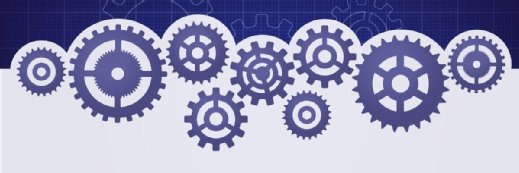
your123 - stock.adobe.com
Salesforce users get more low-code automation, including RPA
Salesforce integrates MuleSoft RPA and Composer with Salesforce Flow, which avails low-code process automation and bot creation to line-of-business users.
MuleSoft API and robotic process automation tools will be embedded within Salesforce Flow Builder, which enables line-of-business users to author their own automation bots. The license is pricey, but experts believe returns on automation investments could far exceed the costs.
Salesforce automation tools include MuleSoft Composer, released last year and now embedded in Flow Builder, Salesforce's no-code development platform. Salesforce RPA, which will be released later this summer, was built from technology acquired last year from Servicetrace.
Both the robotic process automation (RPA) and MuleSoft Composer bots provide a means to connect Salesforce to legacy apps, and to automate processes within Salesforce. RBC Wealth Management used both to build a new desktop for its wealth advisors. The idea behind the two-year project was not only to create workflow efficiencies, but also to make RBC's new Salesforce install a recruiting tool to bring in more wealth advisors -- and their clients -- said Greg Beltzer, head of technology at RBC Wealth Management.
The MuleSoft automations connected Salesforce to existing RBC applications and cut down on clicks for end-user employees. Beltzer's team wanted to make the most streamlined Salesforce instance it could to entice wealth advisors to come over from other companies, even those that used Salesforce.
"We're recruiting advisors from other firms, or recruiting them from our competitors, right?" Beltzer said. "So if they use Salesforce there, which most likely they did, I want to make sure my Salesforce is better -- when they to see it -- as part of the recruitment process."
The project started with observers from Beltzer's team documenting "a day in the life" of a few RBC wealth advisors. Watching processes such as preparing for a client meeting was painful -- spending up to four hours grabbing bits of information from up to 26 different systems to prepare their PowerPoint presentations.
With MuleSoft automations, Beltzer's group automated processes -- such as customer onboarding or change of customer address across many systems -- so that its wealth advisors need to toggle among only four systems at most, and aren't switching through all of those apps and entering data. This was accomplished by distilling each business process into individual software services and updating data with the bots when possible -- and making Salesforce the main place where advisors do their work.
"All of that data is right there for them [in Salesforce], nice and neat, easy to read," Beltzer said. "We put places to take notes. Then they can really focus on, you know, what they like to do, which is the relationship with the client, right? They want to talk about their kids, the golf game and what their goals are going to be for retirement -- not having to collect a bunch of numbers that should all just be automatic."
RPA gold rush is on
RPA -- literally automating a human's clicks in an actual or virtual machine when APIs aren't applicable or available -- has caught on in the era of cloud software, as organizations meld disparate, sometimes older applications with new cloud environments. Large CX vendors such as Salesforce and Microsoft have acquired RPA companies.
The applications for RPA span all of CX, said Brent Hayward, CEO and general manager of MuleSoft. That said, some may need it more: As Salesforce piloted MuleSoft RPA among its users, customer service needed it the most to connect to back-end systems to, for example, retrieve inventory data from an ERP, track shipping or schedule field-service calls.
Hayward said other users in the pilot who found utility for RPA included those in revenue ops, which draws data from across sales, marketing and other teams. E-commerce leaders, who needed to update product information, used RPA to keep sites current. Users in records-intensive verticals such as healthcare, too, found use for automation tools.
"We also see big demand [where users need] traditional OCR, scanning, heavy documentation," Hayward said. "Anything that requires a manual, human task that's not digital, we see a lot of demand around that."
Marketers, too will likely find many immediate uses for Salesforce low-code automation tools such as MuleSoft RPA and Composer, said Rebecca Wettemann, CEO of analyst firm Valoir. Customer data privacy and security compliance processes in particular are ripe for automation, especially to anonymize data and mask identities in marketing segments to protect personal information, or to delete a customer's data according to such laws as Europe's General Data Protection Regulation.
Automating those processes may justify the steep price tag of MuleSoft subscriptions, which range from $27,000 per year to $57,000 per year depending on the number of apps a user deploys and how many tasks they perform. The bots free high-paid employees from menial, manual tasks to which they currently devote too much time, Wettemann said.
"Customers will identify key areas where they really look at the amount of work or time that is being spent," Wettemann said. "I use marketing automation areas as an example, because right now I think there's tons of expensive marketer time being spent dealing with issues that could be dealt with in a much more efficient, consistent and cost-effective way."
Don Fluckinger covers enterprise content management, CRM, marketing automation, e-commerce, customer service and enabling technologies for TechTarget.







